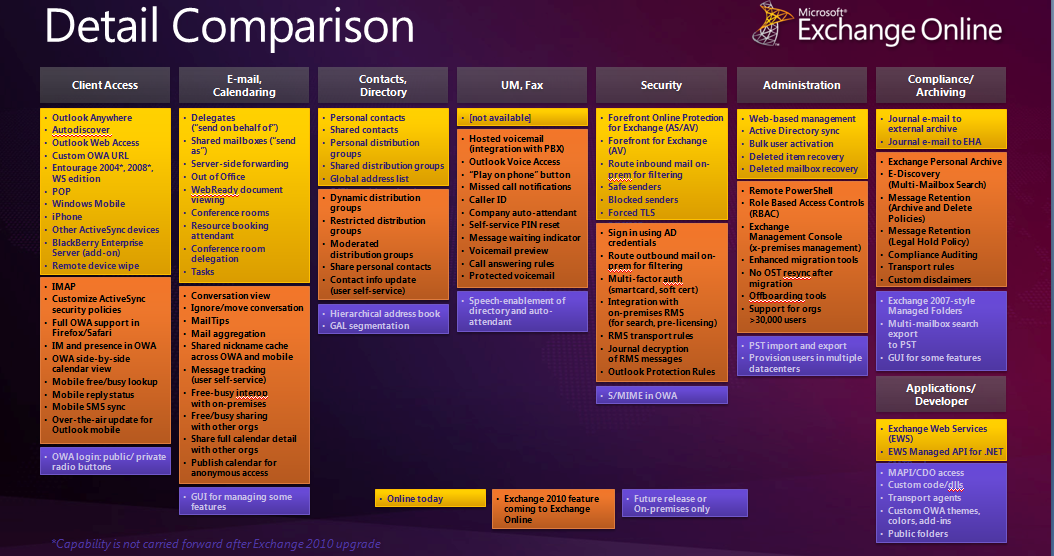Microsoft shares (officially) its future BPOS plans

At this week's Worldwide Partner Conference, Microsoft officials shared with attendees their "official" roadmap for updating the company's hosted Business Productivity Online (BPOS) suite. Company officials shared which features and capabilities that the company rolled out already as part of the on-premises server complements of the BPOS products will be added to the Microsoft-hosted versions of those offerings.
I've run a few slides on this blog over the past couple of months, dating back to November 2009, that included much of this same information. But it wasn't until this week that Microsoft officials acknowledged these details.
I've heard that customers of the Dedicated (i.e., non-shared/non-multitenant) versions of Microsoft's BPOS and its point-product parts -- Exchange Online, SharePoint Online, Communications Online and Live Meeting -- already have some of the 2010 feature updates. But those using the "Standard" (multitenant) versions do not.
Microsoft didn't provide specific dates as to when they'd deliver the updates to each of its managed services, but did say the updates would happen in fiscal 2011 (which runs from July 1, 2010, to June 30, 2011). Earlier this year, the Softies said to watch for a "preview" of these BPOS updates before the end of this calendar year, and advised companies to prepare their infrastructure now for these BPOS futures.
The roadmap slides the Softies showed at the partner conference this week look just about identical to the ones I ran earlier. In November 2009, Microsoft shared privately information about the coming 2010 features for Exchange Online, SharePoint Online and Communications Online. I ran some of this information, shared with me by sources, in various recent blog posts.
According to Microsoft officials this week, here's what's coming on the Exchange Online front (from the WPC 2010 slide deck):

Here's what's happening with SharePoint Online:
(click on the slide to enlarge)
The on-premise Office Communications Server 14 is likely to ship at the very the end of this year. Communications Online users won't be getting these new OCS "14" features for a number of months into 2011, I'd bet.
Here's the new slide Microsoft showed this week at WPC '10, re: what's coming, re: next-gen Communications Online features:
What else is on tap for BPOS users? As Microsoft said last fall (in those slides I ran), the BPOS team will be phasing in over the coming months:
- Single Sign On with identity federation
- Redesigned User Interface (for the console)
- More administration and access control
- New markets and languages
- Enhance Syndication partner interface ("Syndication" is Microsoft's program allowing mostly telco companies, but also some other partners to private-label its BPOS services.)
We still have no exact dates (beyond "second half of 2011") for these new features.
Earlier this week, Microsoft rolled out the July refresh for BPOS, which added a hosted Blackberry Administration Center and Live Meeting updates to the current BPOS offering. Coming in the near term (again, no specific dates) are Office 2010 support and enhanced PowerShell scripting, the Softies reiterated at the Worldwide Partner Conference this week.
Microsoft showcased at the show this week a number of its partners who've already jumped on the BPOS bandwagon. To encourage others to start selling the suite, Microsoft announced that it will offer partners 250 BPOS seats for their own use.
Microsoft officials have said their goal is to continue to narrow the delta between the availability of on-premises server features and the Microsoft-hosted versions of these services, going forward. Partners and customers are both clamoring for this.